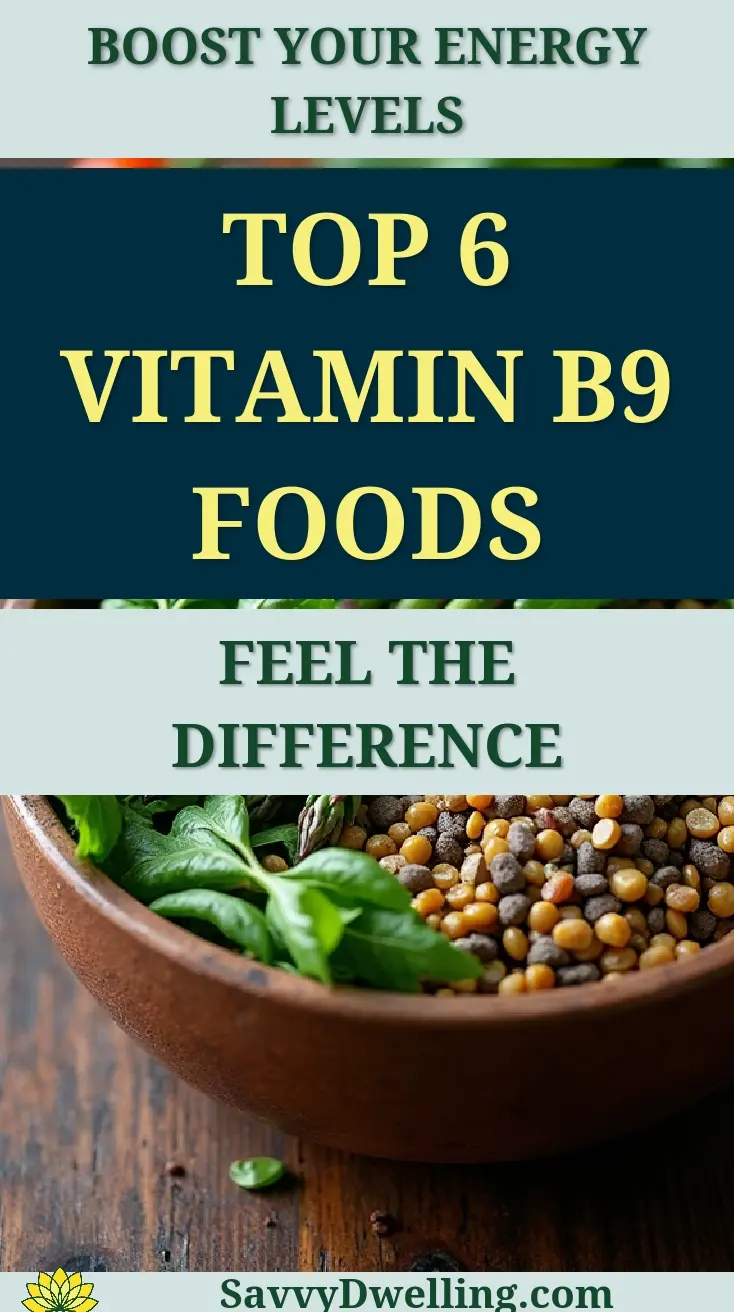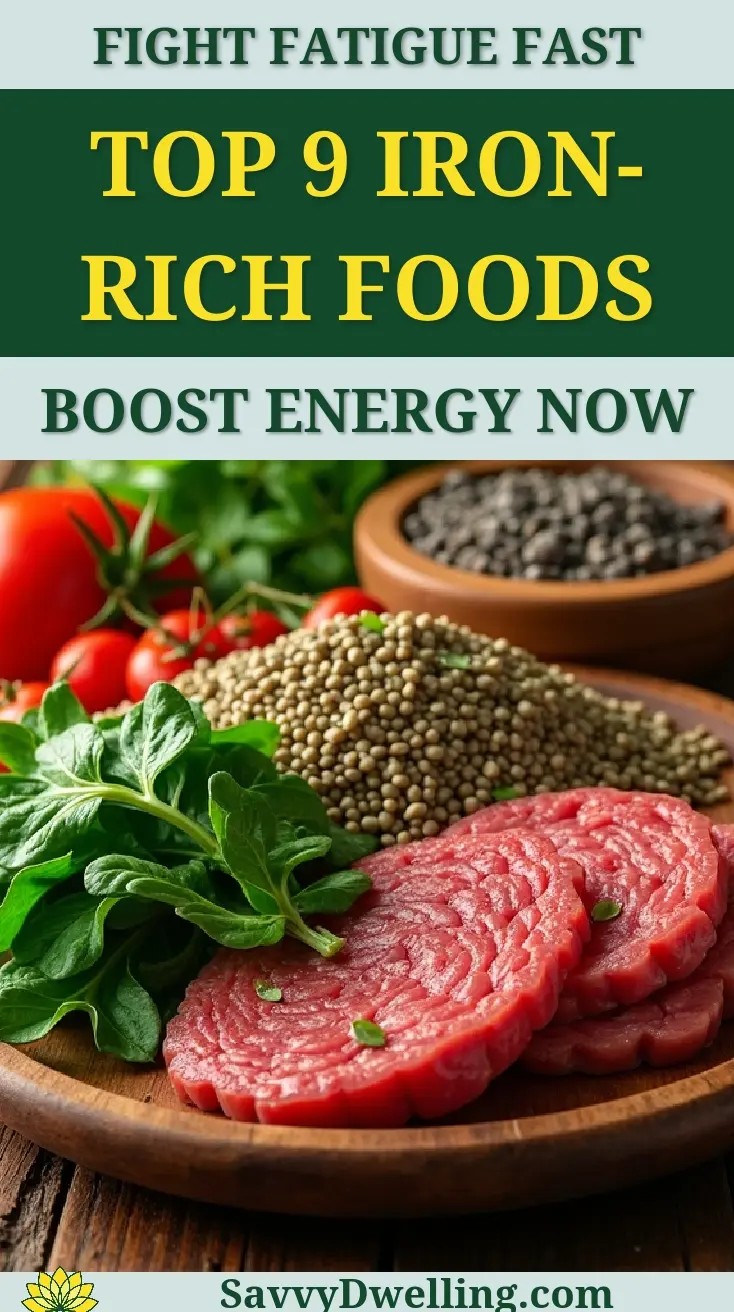The Best Foods to Eat for a Natural Energy Boost (Instead Of Coffee)
Are you hitting that afternoon wall harder than ever, reaching for your third cup of coffee just to feel human again? That familiar cycle of caffeine highs followed by energy crashes doesn’t have to be your daily reality. Your body is actually designed to maintain steady energy levels throughout the day when you fuel it with the right foods.
We’ve spent years researching the most effective natural energy-boosting foods that actually work without the jittery side effects of caffeine. This guide will show you exactly which foods provide sustained energy, when to eat them for maximum benefit, and simple ways to incorporate them into your busy schedule. Say goodbye to that 3 PM slump and hello to consistent, natural vitality that lasts all day long.
Contents
- At a Glance: The Best Natural Energy Foods
- 1. Complex Carbohydrate Powerhouses
- 2. Fresh Fruits That Fight Fatigue
- 3. Protein-rich Energy Builders
- 4. Nuts and Seeds for Quick Energy Hits
- 5. Legumes and Beans for Lasting Power
- 6. Natural Energy Drinks and Smoothies
- The Science Made Simple: Why These Foods Support Natural Energy
- Common Mistakes to Avoid When Seeking Natural Energy
- Frequently Asked Questions
- Final Words
At a Glance: The Best Natural Energy Foods
When you’re feeling drained and reaching for another cup of coffee, your body is actually craving sustained fuel rather than a quick caffeine fix. The best foods for energy work by providing steady blood sugar levels, essential nutrients, and long-lasting satisfaction without the inevitable crash.
Natural energy boosters fall into six main categories that work together to keep you alert and energized throughout your day. Complex carbohydrates provide the foundation, while proteins help slow digestion for sustained energy release.
Fresh fruits offer immediate natural sugars paired with fiber to prevent energy spikes and crashes. Nuts and seeds deliver healthy fats and minerals that support your body’s energy production at the cellular level.
Legumes and beans round out your energy arsenal with their unique combination of plant-based protein and complex carbs. Natural energy drinks and smoothies can bridge the gaps between meals when you need a quick but lasting boost.
Each category works differently in your body, but they all share one key trait: they provide energy that builds gradually and lasts for hours. Unlike coffee’s quick jolt followed by fatigue, these energizing foods create a steady stream of fuel your body can actually use.
The secret lies in choosing foods that stabilize rather than spike your blood sugar while delivering the vitamins and minerals your cells need to convert nutrients into usable energy. This approach transforms how you feel throughout your entire day, not just for the next hour.
1. Complex Carbohydrate Powerhouses
Oatmeal for Sustained Morning Energy
Why It Works
Oatmeal stands out among energizing foods because it releases glucose slowly into your bloodstream. The beta-glucan fiber in oats creates a gel-like substance in your stomach, preventing energy crashes that often follow sugary breakfast choices.
This steady energy release can keep you fueled for 3-4 hours without the jittery feeling coffee brings. Your pancreas doesn’t have to work overtime producing insulin spikes, which means more consistent energy throughout your morning.
Best Preparation Methods
Steel-cut oats provide the longest-lasting energy boost among all oat varieties. Their minimal processing means more fiber and slower digestion.
- Soak steel-cut oats overnight in twice the water amount
- Cook for 10-15 minutes in the morning instead of the usual 30
- Add a pinch of salt to enhance flavor and mineral content
- Stir in protein powder or Greek yogurt during the last minute of cooking
Rolled oats work well for busy mornings. Cook them with milk instead of water to add protein and create creamier texture that sustains energy longer.
Energy-Boosting Toppings
The right toppings transform plain oatmeal into a complete energy food. Combining healthy fats, protein, and natural sugars creates the perfect energy-boosting foundation.
- Chopped walnuts and banana slices for omega-3s and potassium
- Almond butter and berries for sustained protein and antioxidants
- Chia seeds and honey for fiber and natural sweetness
- Cinnamon and apple pieces for blood sugar regulation
- Hemp hearts and coconut flakes for complete proteins
Sweet Potatoes for Long-lasting Fuel
Nutritional Benefits
Sweet potatoes deliver complex carbohydrates alongside beta-carotene, which supports cellular energy production. Unlike regular potatoes, their natural fiber content slows sugar absorption, preventing energy dips.
One medium sweet potato contains enough potassium to support proper muscle function and nerve transmission. This mineral combination helps your body convert food into usable energy more efficiently than simple carbohydrate sources.
The vitamin B6 content aids in neurotransmitter production, supporting mental clarity alongside physical energy. This makes sweet potatoes ideal natural energy boosters for both body and brain.
Quick Cooking Methods
Microwave cooking preserves more nutrients than boiling and cuts cooking time dramatically.
- Pierce the sweet potato skin 8-10 times with a fork
- Microwave on high for 4-6 minutes, depending on size
- Flip halfway through cooking time
- Test doneness by gently squeezing – it should give slightly
- Let cool for 2 minutes before handling
Roasting brings out natural sweetness while maintaining fiber content. Cut into 1-inch cubes, toss with olive oil, and roast at 425°F for 25-30 minutes.
Portable Sweet Potato Options
Prep sweet potatoes in advance for grab-and-go energy foods. Cold sweet potatoes actually develop resistant starch, which feeds beneficial gut bacteria and provides sustained energy release.
- Baked sweet potato rounds with almond butter for protein balance
- Sweet potato and black bean wraps for complete amino acids
- Mashed sweet potato energy balls mixed with oats and nuts
- Roasted sweet potato salad with quinoa and pumpkin seeds
Quinoa for Complete Energy Support
Protein and Carb Balance
Quinoa contains all nine essential amino acids, making it unique among plant-based foods that provide energy. This complete protein profile helps stabilize blood sugar while providing lasting fuel.
The 4:1 carbohydrate to protein ratio in quinoa matches what sports nutritionists recommend for sustained energy. Your muscles get both immediate fuel from carbs and building blocks from protein in one convenient package.
Magnesium and iron in quinoa support oxygen transport and energy production at the cellular level. This mineral combination makes quinoa particularly effective for combating afternoon fatigue.
Meal Prep Ideas
Cook quinoa in large batches to create versatile energy-boosting meals throughout the week.
- Rinse quinoa thoroughly to remove bitter saponins
- Use 2:1 water to quinoa ratio for fluffy texture
- Bring to boil, then simmer covered for 15 minutes
- Let stand 5 minutes before fluffing with a fork
- Cool completely before refrigerating in airtight containers
Transform cooked quinoa into energizing meals:
- Breakfast bowls with berries and Greek yogurt
- Lunch salads with roasted vegetables and tahini dressing
- Energy-boosting patties mixed with eggs and vegetables
- Stuffed bell peppers with quinoa and lean ground turkey

2. Fresh Fruits That Fight Fatigue
Bananas for Instant Natural Energy
Potassium and Natural Sugars
Bananas provide three types of natural sugars – fructose, glucose, and sucrose – that your body absorbs at different rates. This creates both immediate and sustained energy without the crash associated with processed sugars.
The 400mg of potassium in one banana supports proper muscle contraction and nerve function. Low potassium levels directly contribute to fatigue, making bananas one of the most effective natural ways to boost energy quickly.
Vitamin B6 in bananas helps convert stored carbohydrates into usable glucose. This conversion process becomes more efficient when you’re well-hydrated, making bananas excellent post-workout energy foods.
Perfect Timing for Energy Boosts
Eat bananas 30-60 minutes before physical activity for optimal energy release. The natural sugars provide immediate fuel while the fiber prevents blood sugar spikes.
Slightly green bananas contain more resistant starch, which provides longer-lasting energy, while ripe bananas offer quicker energy absorption. Choose ripeness based on your energy needs.
Pair bananas with protein or healthy fats to extend their energy-boosting effects:
- Banana with almond butter for 2-3 hours of sustained energy
- Banana and Greek yogurt for post-workout recovery fuel
- Frozen banana smoothie with protein powder for meal replacement
Apples With Nut Butter Combinations
Fiber and Healthy Fats Balance
Apples contain both soluble and insoluble fiber, which slows sugar absorption and promotes steady energy release. The pectin fiber specifically helps regulate blood glucose levels.
Combining apples with nut butter creates the ideal energizing food combination. The healthy fats in nuts slow digestion of the apple’s natural sugars, providing 2-4 hours of consistent energy without crashes.
Quercetin, an antioxidant abundant in apple skin, may improve oxygen utilization during physical activity. This makes apple and nut butter combinations particularly effective for pre-exercise energy.
Portable Snack Solutions
Pre-slice apples and store with lemon juice to prevent browning. Pack nut butter in small containers for convenient energy-boosting snacks anywhere.
- Apple slices with individual almond butter packets
- Whole apple with single-serve peanut butter cups
- Apple “sandwiches” with nut butter between two slices
- Dried apple rings with mixed nut butter for travel
Berries for Antioxidant Energy
Blueberries and Brain Function
Blueberries contain anthocyanins that cross the blood-brain barrier and support cognitive energy. These compounds may improve memory and mental clarity within 2-3 hours of consumption.
The natural sugars in blueberries provide quick energy while their fiber content prevents the blood sugar rollercoaster that leads to mental fatigue. This makes them ideal brain foods for sustained focus.
Research suggests that regular blueberry consumption may improve energy metabolism at the cellular level. The antioxidants protect mitochondria, your cells’ energy factories, from oxidative damage. Incorporating blueberries into your diet not only aids energy production but also offers a range of health benefits. Some of the impressive benefits include enhancing heart health, supporting brain function, and boosting immunity.
Strawberries for Vitamin C Energy
Eight medium strawberries provide more vitamin C than an orange. This vitamin supports iron absorption, which is crucial for oxygen transport and energy production.
The fructose in strawberries absorbs more slowly than other fruit sugars, providing gentler energy that doesn’t spike insulin levels. This slower absorption makes strawberries excellent natural energy boosters for people with blood sugar concerns.
Folate in strawberries supports red blood cell formation and energy metabolism. Combined with their natural sugars, this creates sustained energy that supports both physical and mental performance.
Also See: 9 Bedtime Drinks to Help You Burn Fat Overnight
3. Protein-rich Energy Builders
Eggs for Steady Energy Release
Complete Protein Benefits
Eggs contain all nine essential amino acids in optimal ratios for human nutrition. This complete protein profile provides steady energy by maintaining stable blood sugar levels for 3-4 hours.
The leucine in eggs specifically triggers muscle protein synthesis, which requires energy and keeps your metabolism active. This metabolic boost from eggs can increase your daily energy expenditure by 15-30 calories per egg.
B vitamins in eggs, particularly B12 and choline, support energy production at the cellular level. These nutrients help convert fats and carbohydrates into usable energy more efficiently.
Quick Cooking Methods
Prepare protein-rich energy foods in under 5 minutes with these egg techniques:
- Scrambled eggs: Beat with splash of milk, cook over medium-low heat, stirring constantly for 2-3 minutes
- Poached eggs: Bring water to gentle simmer, create whirlpool, drop egg in center, cook 3-4 minutes
- Hard-boiled batch: Cover eggs with cold water, bring to boil, remove from heat, cover 12 minutes
- Microwave scramble: Beat eggs in microwave-safe bowl, cook 45 seconds, stir, cook 30 seconds more
Greek Yogurt for Sustained Fuel
Probiotics and Energy Connection
Greek yogurt contains beneficial bacteria that support nutrient absorption in your digestive tract. Better absorption means your body extracts more energy from the foods you eat.
The protein in Greek yogurt – typically 15-20 grams per serving – provides amino acids that support neurotransmitter production for mental energy. This protein also prevents the blood sugar dips that cause afternoon fatigue.
Probiotic strains in yogurt may influence the gut-brain axis, potentially improving energy levels through better communication between digestive and nervous systems.
Energy-Boosting Yogurt Parfaits
Layer ingredients strategically to maximize energy benefits and create satisfying energizing snacks.
- Base layer: Plain Greek yogurt with honey for natural sweetness
- Middle layer: Mixed berries for antioxidants and fiber
- Top layer: Granola or nuts for healthy fats and crunch
- Optional additions: Chia seeds, hemp hearts, or protein powder
Prep parfaits in mason jars for grab-and-go energy foods that stay fresh for 3-4 days in the refrigerator.
Lean Meats for Long-term Energy
Turkey and Chicken Options
White meat poultry provides high-quality protein with less saturated fat than red meat. The amino acid profile supports sustained energy production without the sluggish feeling heavier proteins can cause.
Turkey contains tryptophan, which supports serotonin production for stable mood and energy. Contrary to popular belief, turkey’s protein actually promotes alertness when eaten with complex carbohydrates.
Chicken breast delivers 25 grams of protein per 3-ounce serving, providing the building blocks for energy-producing enzymes and hormones. This protein density makes it efficient fuel for active individuals.
Meal Prep Strategies
Cook lean meats in batches to create quick energy-boosting meals throughout the week:
- Season 2-3 pounds of chicken breasts or turkey cutlets
- Bake at 375°F for 20-25 minutes until internal temperature reaches 165°F
- Cool completely before slicing and portioning
- Store in airtight containers with different seasonings
- Use within 4-5 days for optimal freshness and energy benefits
Transform prepped proteins into energizing meals:
- Chicken and quinoa bowls with roasted vegetables
- Turkey and sweet potato hash for breakfast energy
- Sliced chicken on whole grain wraps with avocado
- Diced turkey in energy-boosting salads with nuts and seeds
4. Nuts and Seeds for Quick Energy Hits
When your energy dips between meals, reaching for nuts and seeds gives you the perfect combination of healthy fats, protein, and minerals. These compact natural energy boosters work differently than sugary snacks by providing sustained fuel without the crash.
The beauty of nuts and seeds lies in their portability and shelf stability. You can keep them in your desk drawer, car, or purse for whenever fatigue strikes.
Almonds for Healthy Fat Energy
Almonds pack more energy-boosting nutrients per ounce than almost any other nut. Their combination of monounsaturated fats and plant-based protein creates steady energy release that lasts for hours.
Magnesium and Energy Production
Each handful of almonds delivers about 75mg of magnesium, which your cells need to convert food into usable energy. Low magnesium levels directly correlate with fatigue and muscle weakness, making almonds one of the most effective foods that boost energy naturally.
Magnesium also supports over 300 enzymatic reactions in your body, including those that regulate blood sugar and maintain steady energy levels. If you’ve been feeling sluggish despite eating regularly, inadequate magnesium might be the culprit. A lack of magnesium can manifest as various signs and symptoms that can significantly affect daily life. Recognizing potential magnesium deficiency symptoms is important for overall health and well-being.
Portion Control Guidelines
Stick to one ounce (about 23 almonds) per serving to maximize benefits without overdoing calories. This portion provides approximately 6 grams of protein and 14 grams of healthy fats for sustained energy.
Divide your weekly almond supply into small containers or bags to avoid mindless overeating. Raw or lightly roasted almonds work best since heavily salted varieties can cause water retention and bloating.
Walnuts for Brain-boosting Energy
Walnuts stand out among energizing foods because they specifically support mental clarity alongside physical energy. Their unique nutrient profile makes them particularly valuable when you need both focus and stamina.
Omega-3 Benefits
Walnuts contain more omega-3 fatty acids than any other tree nut, with about 2.5 grams per ounce. These healthy fats improve blood flow to the brain and reduce inflammation that can zap your energy. Consuming walnuts regularly can offer numerous health benefits beyond just omega-3s. In fact, they are among the top nuts linked to improved heart health, brain function, and weight management.
The alpha-linolenic acid (ALA) in walnuts converts to EPA and DHA in your body, the same compounds found in fish oil. This conversion process supports both cognitive function and sustained energy production at the cellular level.
Creative Ways to Add Walnuts
Beyond eating them plain, walnuts enhance both the flavor and energy potential of many foods:
- Chop walnuts into oatmeal or yogurt for extra protein and healthy fats
- Blend them into smoothies for a creamy texture and sustained energy
- Add crushed walnuts to salads for satisfying crunch and lasting fuel
- Mix chopped walnuts with dried fruit for a balanced trail mix
- Sprinkle them over roasted vegetables for added nutrition
Pumpkin Seeds for Mineral-rich Energy
Often overlooked, pumpkin seeds (also called pepitas) rank among the most nutrient-dense foods that provide energy. They’re particularly rich in minerals that many people lack in their daily diets.
Zinc and Iron Content
One ounce of pumpkin seeds provides about 2.2mg of zinc and 4.2mg of iron. These minerals work together to transport oxygen throughout your body and maintain steady energy production.
Zinc deficiency can cause fatigue, poor concentration, and weakened immune function. Iron deficiency leads to anemia and persistent tiredness. Pumpkin seeds address both potential deficiencies in one convenient snack. It’s important to recognize how a lack of zinc can manifest in unexpected ways, including skin issues and hair loss. Identifying these surprising signs of zinc deficiency can help ensure better overall health.
Roasting and Storage Tips
Raw pumpkin seeds from fresh pumpkins need proper preparation to maximize their energy benefits:
- Remove seeds from pumpkin flesh and rinse thoroughly in cold water
- Soak cleaned seeds in salt water for 8-10 hours to improve digestibility
- Drain and pat dry completely with paper towels
- Toss with minimal olive oil and your preferred seasonings
- Roast at 300°F for 20-30 minutes, stirring every 10 minutes
- Cool completely before storing in airtight containers
Properly roasted pumpkin seeds stay fresh for up to one week at room temperature or one month in the refrigerator.

5. Legumes and Beans for Lasting Power
Legumes and beans represent some of the most underrated natural energy food options available. Their combination of complex carbohydrates, plant protein, and fiber creates steady energy release that can power you through long work sessions or physical activities.
Unlike simple carbohydrates that spike blood sugar quickly, legumes provide gradual glucose release over several hours. This makes them ideal for preventing energy crashes and maintaining consistent focus.
Lentils for Fiber-rich Energy
Lentils pack more fiber and protein per cup than almost any other legume while cooking faster than most beans. Their 18 grams of protein and 15 grams of fiber per cooked cup make them exceptional foods that give you energy and stamina.
Quick-Cooking Varieties
Different lentil types offer varying cooking times and energy benefits:
- Red lentils: Cook in 15-20 minutes, break down into creamy texture
- Green lentils: Take 25-30 minutes, hold their shape well
- Black beluga lentils: Require 20-25 minutes, have firm texture and rich flavor
- French lentils: Need 30-35 minutes, maintain structure in salads
Red lentils work best for quick weeknight meals when you need fast preparation. Green and black varieties suit meal prep since they reheat well without becoming mushy.
Energy-Boosting Lentil Recipes
Simple lentil preparations maximize their energy benefits while fitting busy schedules:
- Power bowl base: Cook lentils in vegetable broth, serve with roasted vegetables and tahini
- Quick soup: Simmer red lentils with diced tomatoes, onions, and spices for 20 minutes
- Protein-packed salad: Mix cooled cooked lentils with fresh herbs, olive oil, and lemon juice
- Energy smoothie addition: Blend 1/4 cup cooked lentils into fruit smoothies for extra protein
Chickpeas for Versatile Energy
Chickpeas adapt to both sweet and savory preparations while delivering consistent energy through their balanced macronutrient profile. One cup provides 15 grams of protein and 12 grams of fiber alongside energizing B vitamins.
Hummus and Energy Combinations
Pairing hummus with the right foods creates sustained energy combinations that prevent afternoon crashes. The protein and healthy fats in chickpeas slow carbohydrate absorption for steady glucose release.
Optimal hummus pairings for sustained energy include:
- Apple slices for natural sweetness plus fiber
- Cucumber rounds for hydration and crunch
- Whole grain pita chips for complex carbohydrates
- Bell pepper strips for vitamin C and antioxidants
- Carrot sticks for beta-carotene and natural sugars
Roasted Chickpea Snacks
Roasted chickpeas transform into crunchy, portable energizing snacks that satisfy both hunger and energy needs:
- Drain and rinse one can of chickpeas thoroughly
- Pat completely dry with paper towels and remove loose skins
- Toss with 1 tablespoon olive oil and desired seasonings
- Spread on baking sheet in single layer
- Roast at 400°F for 20-30 minutes, shaking pan every 10 minutes
- Cool completely before storing in airtight container
Black Beans for Sustained Fuel
Black beans contain higher antioxidant levels than most other legumes while providing substantial protein and complex carbohydrates. Their dark color indicates anthocyanins, compounds that support both energy production and recovery.
Meal Integration Ideas
Black beans integrate seamlessly into meals throughout the day for consistent natural energy support:
- Breakfast scramble: Add black beans to eggs for extra protein and fiber
- Lunch bowl foundation: Use black beans as base for quinoa and vegetable bowls
- Afternoon snack: Mash black beans with avocado for energizing toast topping
- Dinner enhancement: Stir black beans into soups, stews, and grain dishes
- Meal prep component: Cook large batches for quick energy additions all week
6. Natural Energy Drinks and Smoothies
When solid food feels too heavy but you need an energy boost, liquid options can provide quick nutrition and hydration simultaneously. The key lies in choosing drinks that combine multiple energizing foods and drinks rather than relying on single ingredients.
Homemade energy drinks give you control over ingredients while avoiding artificial additives and excessive sugars found in commercial options.
Green Smoothies for Nutrient-dense Energy
Green smoothies pack more vitamins, minerals, and antioxidants per serving than almost any other natural ways to boost energy. The combination of leafy greens and fruit provides both quick and sustained energy sources.
Spinach and Fruit Combinations
Spinach blends seamlessly into fruit smoothies while adding iron, folate, and other energy-supporting nutrients without affecting taste significantly. Fresh spinach works better than frozen for smoother texture and easier blending.
Winning spinach smoothie combinations include:
- Tropical blend: Spinach + pineapple + mango + coconut water
- Berry power: Spinach + mixed berries + banana + almond milk
- Green apple fresh: Spinach + green apple + cucumber + lime juice
- Chocolate fix: Spinach + banana + cocoa powder + almond butter
Make-Ahead Smoothie Packs
Preparing smoothie ingredients in advance saves time while ensuring you always have energizing foods ready when fatigue strikes:
- Portion fruits and vegetables into freezer bags by smoothie recipe
- Add leafy greens, frozen fruits, and any solid add-ins to each bag
- Label bags with liquid requirements and blend times
- Freeze bags flat for easy storage and quick thawing
- When ready to blend, add liquid and any fresh ingredients
- Blend until smooth, adjusting consistency as needed
Herbal Teas for Gentle Energy
Herbal teas provide sustained energy support without caffeine crashes while offering additional health benefits. Unlike coffee, herbal teas can be consumed throughout the day without disrupting sleep patterns. Exploring different types of herbal teas reveals a variety of health benefits, from improved digestion to enhanced relaxation. Each type brings unique properties that contribute to overall wellness.
Peppermint for Mental Alertness
Peppermint tea increases mental clarity and focus through its menthol content, which stimulates the nervous system gently. Research shows peppermint aroma alone can improve cognitive performance and reduce mental fatigue.
For maximum energy benefits, steep peppermint tea for 5-7 minutes in water just below boiling point. Fresh peppermint leaves provide stronger effects than dried tea bags.
Ginger Tea for Digestive Energy
Ginger tea supports energy production by improving digestion and nutrient absorption while reducing inflammation that can drain your vitality. Better digestion means more efficient energy extraction from foods you eat. This makes ginger, in various forms, a powerful ally for overall health. Some health benefits of ginger include enhanced immunity and reduced muscle pain.
Fresh ginger root creates more potent tea than powdered versions. Slice 1-2 inches of fresh ginger root and simmer in water for 10-15 minutes for optimal potency.
Golden Milk for Evening Energy
Golden milk provides gentle energy support without interfering with sleep quality, making it ideal for evening consumption when you need sustained focus without stimulation.
Turmeric Benefits
Turmeric’s active compound curcumin reduces inflammation throughout the body while supporting healthy blood circulation. Less inflammation means more available energy for daily activities and better overall vitality. Incorporating turmeric curcumin into your diet can lead to numerous health advantages. Among the many benefits, it is known to boost immune function and enhance joint health.
The anti-inflammatory effects of turmeric can help reduce the fatigue associated with chronic low-level inflammation that many people experience from stress, poor diet, or environmental factors. The power of turmeric extends beyond just reducing fatigue, offering numerous health benefits.
Preparation Methods
Traditional golden milk combines multiple warming spices for synergistic energy benefits:
- Heat 1 cup unsweetened plant milk in small saucepan over medium heat
- Add 1 teaspoon turmeric powder, 1/2 teaspoon ground ginger, and pinch of black pepper
- Whisk in 1/4 teaspoon cinnamon and tiny pinch of cardamom
- Simmer gently for 3-5 minutes, whisking occasionally
- Strain if desired and sweeten with honey or maple syrup to taste
- Serve warm for optimal absorption and comfort
The Science Made Simple: Why These Foods Support Natural Energy
Blood Sugar Stability and Energy
Your blood sugar levels directly impact how energized you feel throughout the day. When you eat foods that cause rapid spikes and crashes, you’ll experience that familiar afternoon slump that sends you reaching for more caffeine.
Complex carbohydrates and fiber-rich foods maintain steady glucose levels, providing consistent energy without the rollercoaster effect. Think of your bloodstream like a slow-burning campfire rather than a quick flash of paper flames.
Foods that combine protein, healthy fats, and complex carbs work together to slow digestion. This creates a gentle, sustained release of glucose into your bloodstream, keeping your energy levels stable for hours instead of minutes.
Nutrient Absorption and Energy Production
Your cells need specific nutrients to convert food into usable energy through a process called cellular respiration. Without these key players, even the best energy foods won’t deliver their full potential.
B vitamins act as energy catalysts, helping your body convert carbohydrates, proteins, and fats into ATP – your body’s energy currency. Iron carries oxygen to your cells, while magnesium supports over 300 enzymatic reactions involved in energy production.
When you choose nutrient-dense energy foods, you’re not just filling your stomach – you’re providing your cellular powerhouses with the raw materials they need to function optimally. This is why whole foods consistently outperform processed alternatives for sustained energy.
Hydration’s Role in Natural Energy
Even mild dehydration can zap your energy levels by up to 25%. Your blood becomes thicker when you’re dehydrated, making your heart work harder to pump nutrients and oxygen throughout your body.
Water also plays a crucial role in digestion and nutrient absorption. When you’re properly hydrated, your body can more efficiently break down energy foods and transport those nutrients to where they’re needed most.
Many energy-boosting foods naturally contain high water content, providing both fuel and hydration in one package. Fresh fruits, vegetables, and even foods like oatmeal contribute to your daily fluid intake while delivering sustained energy.
Common Mistakes to Avoid When Seeking Natural Energy
Relying Only on Simple Sugars
Grabbing a candy bar or sugary drink might give you a quick burst, but simple sugars create an energy debt that leaves you more tired than before. Your body rapidly absorbs these sugars, causing insulin levels to spike and then crash dramatically.
The temporary high from simple sugars typically lasts 30-60 minutes, followed by a deeper energy dip that can persist for hours. This creates a cycle where you need more and more sugar just to feel normal.
Instead of reaching for that donut, pair any natural sugars with protein or healthy fats. An apple with almond butter provides natural sweetness while preventing the blood sugar rollercoaster that leaves you exhausted.
Skipping Protein With Carbohydrates
Eating carbohydrates alone – even healthy ones – can still cause energy fluctuations. Protein acts as a buffer, slowing down digestion and creating a more gradual release of energy into your system.
When you combine protein with carbs, you’re creating what nutritionists call “metabolic synergy.” The protein helps stabilize blood sugar while providing amino acids that support neurotransmitter production for mental clarity and focus.
Even something as simple as adding Greek yogurt to your morning oatmeal or having nuts with your fruit can transform a quick energy spike into hours of sustained fuel. This combination keeps you satisfied longer and prevents the crash-and-crave cycle.
Ignoring Meal Timing
Your body’s energy needs fluctuate throughout the day, and eating at irregular intervals can disrupt your natural energy rhythms. Going too long between meals forces your body into “starvation mode,” slowing metabolism and reducing energy production.
Eating every 3-4 hours helps maintain steady blood sugar levels and prevents the desperate hunger that leads to poor food choices. Your body learns to expect fuel at regular intervals, optimizing its energy production processes.
Strategic timing means eating your largest, most complex meals when you need sustained energy, and lighter, easily digestible snacks during lower-activity periods. This approach works with your body’s natural rhythms rather than against them.
Forgetting About Hydration
Many people focus exclusively on food while overlooking hydration’s massive impact on energy levels. Your kidneys, liver, and digestive system all need adequate water to process nutrients efficiently and remove metabolic waste.
Dehydration also affects your brain’s ability to concentrate and make decisions, creating mental fatigue that feels like physical exhaustion. Even a 2% drop in hydration levels can significantly impact your cognitive performance and energy.
Start your day with a large glass of water and continue sipping throughout the day, especially when eating energy foods. Proper hydration amplifies the energizing effects of nutritious foods while helping your body maintain consistent energy production.

Frequently Asked Questions
How Long Does It Take for Natural Foods to Provide an Energy Boost Compared to Caffeine?
While caffeine from coffee can offer an almost instant energy spike within minutes, natural foods typically provide a more gradual increase in energy over 30 minutes to an hour. This slower release is due to the time needed for digestion and nutrient absorption, which helps prevent the crash associated with sugar or caffeine. For a quick effect, pair fast-digesting options like a banana with a source of healthy fats, such as a handful of almonds, to balance the energy release.
What Are the Best Snack Combinations Using These Foods for a Quick Pick-me-up?
Effective combinations balance macronutrients to sustain energy. For example, apple slices with almond butter offers fiber from the fruit and healthy fats from the nut butter, stabilizing blood sugar. Another great option is Greek yogurt with berries and a sprinkle of pumpkin seeds, which combines protein, antioxidants, and minerals for a lasting boost without refined sugars.
Is It Safe to Rely Solely on These Foods for Energy, and Are There Any Side Effects?
Yes, it is generally safe, as these whole foods provide essential nutrients without the jitters or dependency of caffeine. However, gradually reduce coffee intake to avoid withdrawal symptoms like headaches, and ensure variety in your diet to cover all nutritional bases. If you have specific health conditions, consult a healthcare provider, but most people benefit from the sustained energy and improved overall health from these choices.
How Can I Meal Prep These Energy-boosting Foods for a Busy Week?
Plan ahead by batch-cooking staples like quinoa, hard-boiled eggs, or roasted chickpeas for easy additions to meals. Pre-portion snacks, such as nut packs or chopped fruits, and store them in airtight containers. For smoothies, freeze individual portions of spinach and fruit in bags to blend quickly with yogurt or water, saving time while ensuring consistent energy throughout the week.
Final Words
Making the switch from caffeine dependence to natural energy foods might feel overwhelming at first, but your body will thank you for the steady, sustained fuel these options provide. Start small by replacing just one coffee break with a handful of almonds and an apple, or swap your afternoon latte for a green smoothie packed with spinach and berries. These simple changes can dramatically improve how you feel throughout the day without the energy crashes that come with artificial stimulants.
The beauty of natural energy foods lies in their ability to nourish your body while boosting your stamina. Unlike coffee’s quick spike and inevitable drop, these nutrient-dense options work with your body’s natural rhythms to maintain consistent energy levels. Give yourself two weeks to notice the difference – you’ll likely find yourself sleeping better, feeling more balanced, and experiencing fewer afternoon slumps.
Ready to transform your energy levels naturally? Start incorporating these foods into your daily routine and experience the difference for yourself. For more practical wellness tips and home solutions that support your healthiest lifestyle, visit Savvy Dwelling and discover how small changes can create lasting improvements in how you feel every day.


